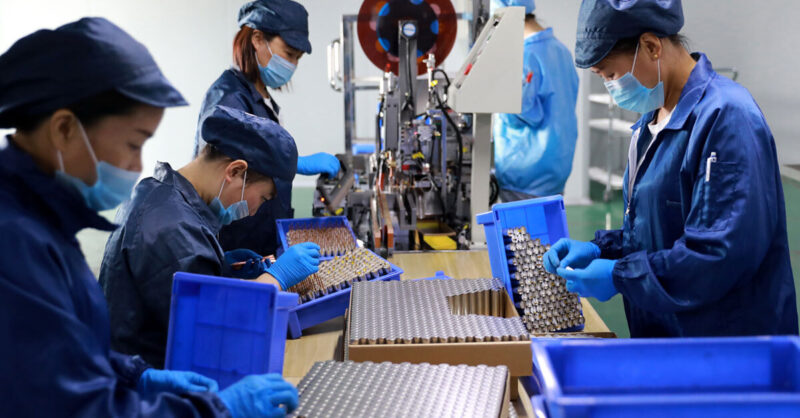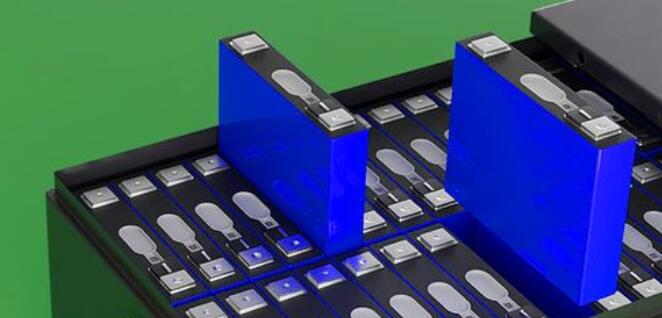إطلاق العنان للقوة: عجائب بطاريات الليثيوم عالية الطاقة
In the ever-evolving landscape of energy storage, high-power lithium batteries have emerged as trailblazers, revolutionizing industries that demand rapid energy discharge and superior performance. This article delves into the intricate details of these energy storage marvels, exploring their technology, applications, and the transformative impact they bring to various sectors.
Understanding High-Power Lithium Batteries:
High-power lithium batteries, a subset of lithium-ion batteries, are engineered to deliver an exceptional power output, making them ideal for applications that require intense bursts of energy. Unlike traditional lithium batteries that prioritize capacity, high-power variants focus on providing rapid and sustained power delivery.
Key Components and Chemistry:
These batteries share fundamental components with lithium-ion counterparts, including an anode, cathode, separator, and electrolyte. However, the specific chemistry is fine-tuned to optimize for power output. Anode materials like lithium titanate (LTO) or lithium iron phosphate (LiFePO4) are commonly used for their ability to facilitate rapid charge and discharge cycles.

Before storing lithium batteries for an extended period, ensure they have a partial charge (around 40-60% capacity). This helps prevent over-discharge, which can be detrimental to the battery’s health.
Applications Across Industries:
Electric Vehicles (EVs):
High-power lithium batteries are at the heart of electric vehicles, enabling swift acceleration and regenerative braking. Their ability to deliver power quickly enhances the overall performance and efficiency of electric cars.
Consumer Electronics:
In smartphones, cameras, and laptops, where quick charging is paramount, high-power lithium batteries ensure that devices are ready for use in minimal time. This contributes to a seamless user experience.
Renewable Energy Storage:
Integrating high-power lithium batteries into renewable energy systems, such as solar or wind installations, facilitates the efficient capture and release of energy. This is especially crucial for maintaining grid stability.
Power Tools:
Cordless power tools leverage the rapid energy discharge capabilities of high-power lithium batteries. This results in tools with shorter charging times and longer operational periods.
Aerospace Applications:
Unmanned aerial vehicles (UAVs) and satellites benefit from the lightweight and high-power characteristics of lithium batteries, enhancing their performance in space and aviation missions.
Technological Advancements:
Graphene-Based Electrodes:
Ongoing research explores the integration of graphene into electrode design, aiming to enhance conductivity and further elevate the power density of lithium batteries.
Advanced Thermal Management:
Efficient thermal management systems ensure that high-power lithium batteries remain within optimal temperature ranges during intense charge and discharge cycles, mitigating safety concerns.
Machine Learning Integration:
Smart battery management systems, employing machine learning algorithms, optimize the performance of high-power lithium batteries by learning usage patterns and adapting charging strategies.

Our high-energy density lithium batteries are engineered to store a remarkable amount of energy within a compact design.
Challenges and Future Prospects:
Heat Management:
Managing heat generated during rapid charging or discharging remains a challenge, and ongoing efforts focus on developing advanced cooling systems.
Cost Efficiency:
While advancements continue to drive down costs, achieving higher energy density without compromising cost-efficiency remains a priority for researchers and manufacturers.
خاتمة:
High-power lithium batteries are catalysts for innovation, powering a diverse array of applications and reshaping industries. As technology advances, addressing challenges and optimizing performance will pave the way for an era where energy storage is not just efficient but also lightning-fast, propelling us toward a more sustainable and electrified future.
-
 Introduction A portable car jump starter battery charger booster starter is a device that is designed to provide a quick and easy method of starting a dead car battery. This device is typically small and portable, making it easy to carry in your vehicle\'s trunk or glove box. In this article, we will discuss the features and benefits of a...اقرأ أكثر
Introduction A portable car jump starter battery charger booster starter is a device that is designed to provide a quick and easy method of starting a dead car battery. This device is typically small and portable, making it easy to carry in your vehicle\'s trunk or glove box. In this article, we will discuss the features and benefits of a...اقرأ أكثر -
 أصبحت بطاريات الليثيوم جزءًا أساسيًا من حياتنا اليومية. من تشغيل الهواتف الذكية إلى السيارات الكهربائية ، أحدثت هذه البطاريات ثورة في طريقة استخدامنا للطاقة واستهلاكها. في هذه المقالة ، سوف نستكشف الجوانب المختلفة لبطاريات الليثيوم ، بما في ذلك التاريخ والكيمياء والمزايا والعيوب. تاريخ بطاريات الليثيوم يمكن تطوير بطاريات الليثيوم ...اقرأ أكثر
أصبحت بطاريات الليثيوم جزءًا أساسيًا من حياتنا اليومية. من تشغيل الهواتف الذكية إلى السيارات الكهربائية ، أحدثت هذه البطاريات ثورة في طريقة استخدامنا للطاقة واستهلاكها. في هذه المقالة ، سوف نستكشف الجوانب المختلفة لبطاريات الليثيوم ، بما في ذلك التاريخ والكيمياء والمزايا والعيوب. تاريخ بطاريات الليثيوم يمكن تطوير بطاريات الليثيوم ...اقرأ أكثر -
 The manufacturing industry plays a crucial role in the global economy, driving innovation and creating products that improve our daily lives. To keep up with the demands of modern manufacturing processes, industrial battery chargers have become an essential component in powering the future of this industry. These chargers provide a reliable and efficient source of energy, ensuring uninterrupted production processes...اقرأ أكثر
The manufacturing industry plays a crucial role in the global economy, driving innovation and creating products that improve our daily lives. To keep up with the demands of modern manufacturing processes, industrial battery chargers have become an essential component in powering the future of this industry. These chargers provide a reliable and efficient source of energy, ensuring uninterrupted production processes...اقرأ أكثر -
 Introduction The global push towards sustainable transportation has led to a significant rise in the demand for electric vehicles (EVs). However, a major obstacle to their widespread adoption has been the limited battery capacity, resulting in shorter driving ranges and longer charging times. In recent years, the development of the lithium van battery has emerged as a game-changer in the...اقرأ أكثر
Introduction The global push towards sustainable transportation has led to a significant rise in the demand for electric vehicles (EVs). However, a major obstacle to their widespread adoption has been the limited battery capacity, resulting in shorter driving ranges and longer charging times. In recent years, the development of the lithium van battery has emerged as a game-changer in the...اقرأ أكثر -
 Low-speed electric vehicles (LSEVs) are compact electric vehicles designed for short-distance travel at relatively low speeds. They are typically used in urban environments, industrial areas, and campuses for transportation purposes. LSEVs are known for their small size, low cost, and eco-friendly operation. Lithium batteries are commonly used in low-speed electric vehicles due to their high energy density, lightweight nature, and...اقرأ أكثر
Low-speed electric vehicles (LSEVs) are compact electric vehicles designed for short-distance travel at relatively low speeds. They are typically used in urban environments, industrial areas, and campuses for transportation purposes. LSEVs are known for their small size, low cost, and eco-friendly operation. Lithium batteries are commonly used in low-speed electric vehicles due to their high energy density, lightweight nature, and...اقرأ أكثر -
 In the dynamic landscape of energy storage, the race to enhance lithium battery energy density stands as a beacon of innovation. Energy density, a crucial metric measuring the amount of energy stored per unit volume or mass, has been a focal point in the quest for more efficient and powerful lithium batteries. This article explores the breakthroughs propelling lithium battery...اقرأ أكثر
In the dynamic landscape of energy storage, the race to enhance lithium battery energy density stands as a beacon of innovation. Energy density, a crucial metric measuring the amount of energy stored per unit volume or mass, has been a focal point in the quest for more efficient and powerful lithium batteries. This article explores the breakthroughs propelling lithium battery...اقرأ أكثر -
 LiFePO4 batteries, also known as lithium iron phosphate batteries, have gained popularity for their high energy density, long lifespan, and low environmental impact. However, like any technology, LiFePO4 batteries have their own set of problems that limit their wider adoption. In this essay, we will explore some of the main issues with LiFePO4 batteries. One of the most significant...اقرأ أكثر
LiFePO4 batteries, also known as lithium iron phosphate batteries, have gained popularity for their high energy density, long lifespan, and low environmental impact. However, like any technology, LiFePO4 batteries have their own set of problems that limit their wider adoption. In this essay, we will explore some of the main issues with LiFePO4 batteries. One of the most significant...اقرأ أكثر

